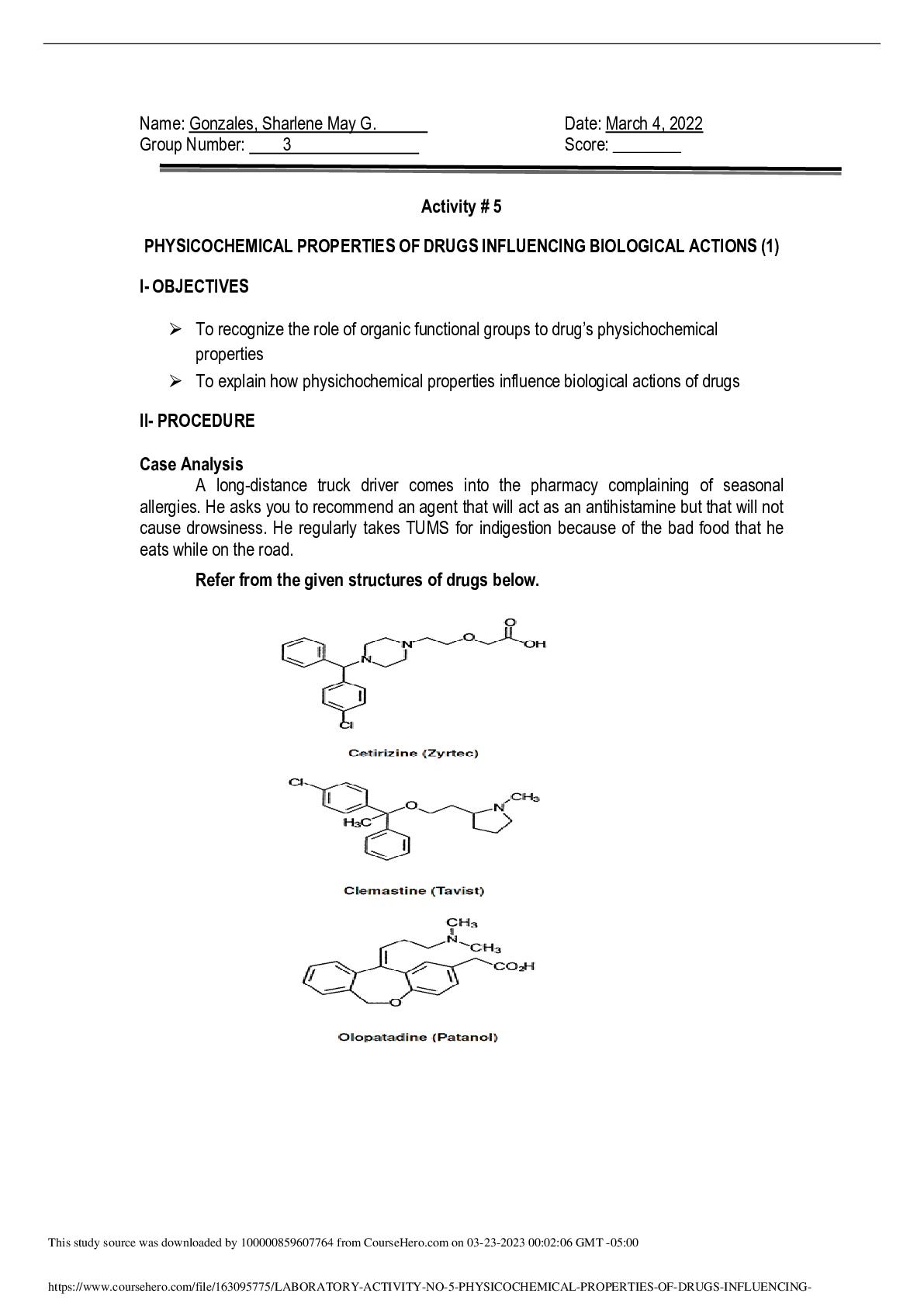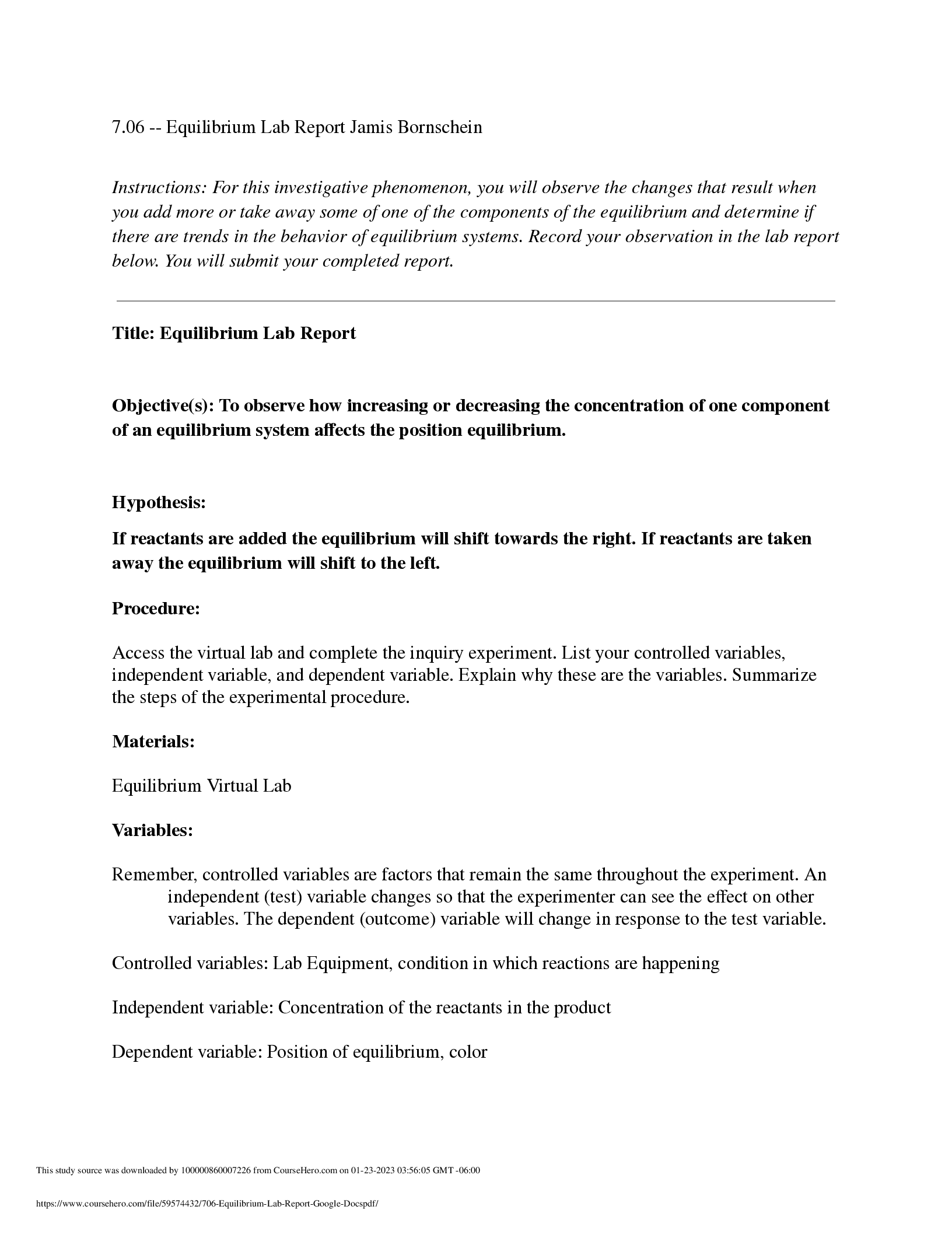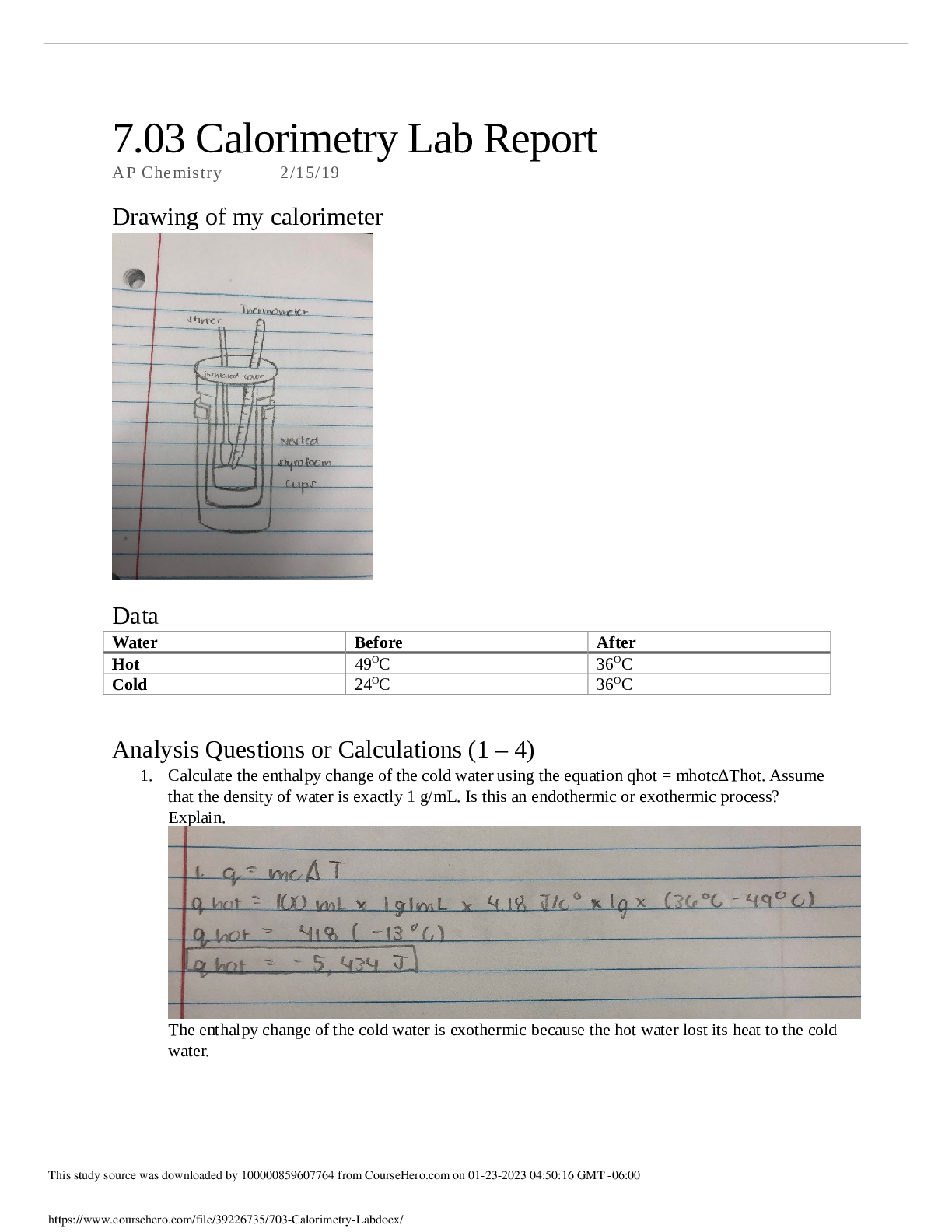Biology > Lab Report > BIOL 202L Lab 14 The Urinary System, Experiment 1: Kidney Filtration, Experiment 2: Urinalysis, Expe (All)
BIOL 202L Lab 14 The Urinary System, Experiment 1: Kidney Filtration, Experiment 2: Urinalysis, Experiment 3: Virtual Model – The Urinary System, Experiment 4: Fetal Pig Dissection of the Urinary System (Includes Questions and Answers)
Document Content and Description Below
Student Name: BIO202L Access Code (located on the lid of your lab kit): AC-JBM7Q58 Pre-Lab Questions 1. What is the function of the ureter? 2. Compare and contrast the male and female urethra. ... 3. Describe the two layers of the kidneys. Experiment 1: Kidney Filtration Table 1: Solutions Present in Each Container Before 60 Minutes Submersion Solution Dialysis Tubing Beaker Congo Red Yellow Food Coloring Table 2: Solutions Present in Each Container After 60 Minutes Submersion Solution Dialysis Tubing Beaker Congo Red Yellow Food Coloring Post-Lab Questions Lab 14 The Urinary System BIO202L ”1. What specific part of the kidney does the dialysis tubing represent? What is this part’s function?” ”2. What does the yellow food coloring represent at the end of the experiment? What does the Congo Red represent? ” ”3. Why is it important that the kidney filters the blood? ” Experiment 2: Urinalysis Table 3: Urine Test Test Normal Abnormal pH 4.5 - 7.5 Acidic Urine (below 4.5) - Diabetes, starvation, dehydration, respiratory acidosis. Alkaline Urine (above 7.5) - Kidney disease, kidney failure, urinary tract infection, respiratory alkalosis. Glucose None Protein None Yeast None Ketones Little or None Table 4: Simulated Urine pH Test Simulated Urine Sample pH A B C Lab 14 The Urinary System BIO202L D 8 Table 5: Simulated Urine Glucose Test Simulated Urine Sample Color Before Hot Water Bath Color After Hot Water Bath A green green B green red C green yellow D green green Table 6: Simulated Urine Protein Test Simulated Urine Sample Color Before Biuret Solution Color After Biuret Solution A B C D Table 7: Simulated Urine Yeast Test Simulated Urine Sample Bubbles Before Hydrogen Peroxide? Bubbles After Hydrogen Peroxide? A B C D Lab 14 The Urinary System BIO202L Table 8: Simulated Urine Ketone Test Simulated Urine Sample Odor Observation A no smell B no smell C very strong smell D no smell Fill in Tables 9 through 12. Refer to Table 3 to determine if each result was normal or abnormal. If abnormal, include the data which indicates this (e.g., a pH of 3.2 means that glucose is present). Using the test results from each of the urine samples, diagnose the condition(s), if any, that each of the sample patients is experiencing. ” Table 9: Sample A Test Test Results pH Glucose Protein Yeast Ketones Lab 14 The Urinary System BIO202L Table 10: Sample B Test Test Results pH 4, acidic urine, diabetes, starvation, dehydration, respiratory acidosis Glucose red, glucose present, diabetes Protein normal Yeast normal Ketones normal Table 11: Sample C Test Test Results pH Glucose Protein Yeast Ketones Table 12: Sample D Test Test Results pH Glucose Protein Yeast Ketones Lab 14 The Urinary System BIO202L Post-Lab Questions ”1. Using the results from each urine sample, along with Table 3, diagnose the condition(s), if any, that each sample patient is experiencing. Table 9 Diagnosis: k Table 10 Diagnosis: Table 11 Diagnosis: Table 12 Diagnosis: 2. If you were a doctor and a patient’s urinalysis came back with high levels of glucose, ketones and an acidic pH, what diagnosis would you immediately look into? ” ”3. If you were a doctor and a patient’s urinalysis came back with an alkaline pH and high levels of protein, what diagnosis would you immediately look into? ” ”4. What other conditions can urine be used to test for? ” Experiment 3: Virtual Model – The Urinary System Insert screenshot of the prostate: Insert screenshot of the renal medulla: Insert screenshot of the renal pelvis: Post-Lab Questions 1. Which component of the urinary system is more lateral: the left kidney or the urinary bladder? left kidney 2. Which component of the urinary system is a funnel shaped cavity formed by the union of calices, ending in the ureter. Renal Pelvis 3. What is the most superior component of the urinary system? Kidneys 4. Where is the prostatic sinus in relation to the prostate? The prostatic sinus is medial to the prostate. Experiment 4: Fetal Pig Dissection of the Urinary System 1. Identify the labeled components of the kidney in the image below. B - calyx C - cortex D - renal artery E - renal vein F -ureter 2. What is the function of the urinary bladder? 4. Would you think the kidneys are highly vascularized? Why or why not? 5. Explain in detail the process by which urine is made. Insert photo of your pig’s dissected kidney with your name clearly visible in the background: ” Lab 14 The Urinary System BIO202L [Show More]
Last updated: 1 year ago
Preview 1 out of 11 pages

Reviews( 0 )
Document information
Connected school, study & course
About the document
Uploaded On
Dec 15, 2020
Number of pages
11
Written in
Additional information
This document has been written for:
Uploaded
Dec 15, 2020
Downloads
0
Views
329

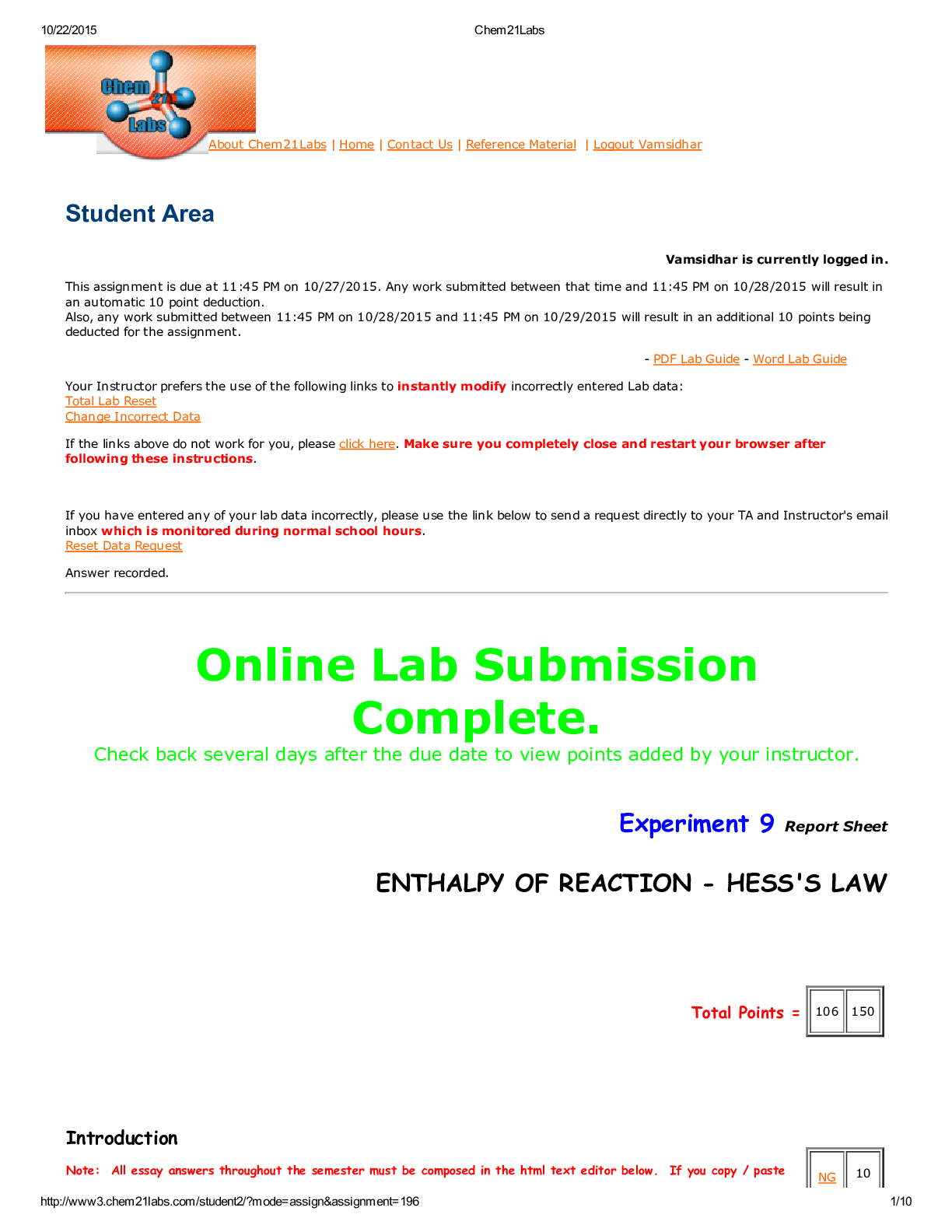
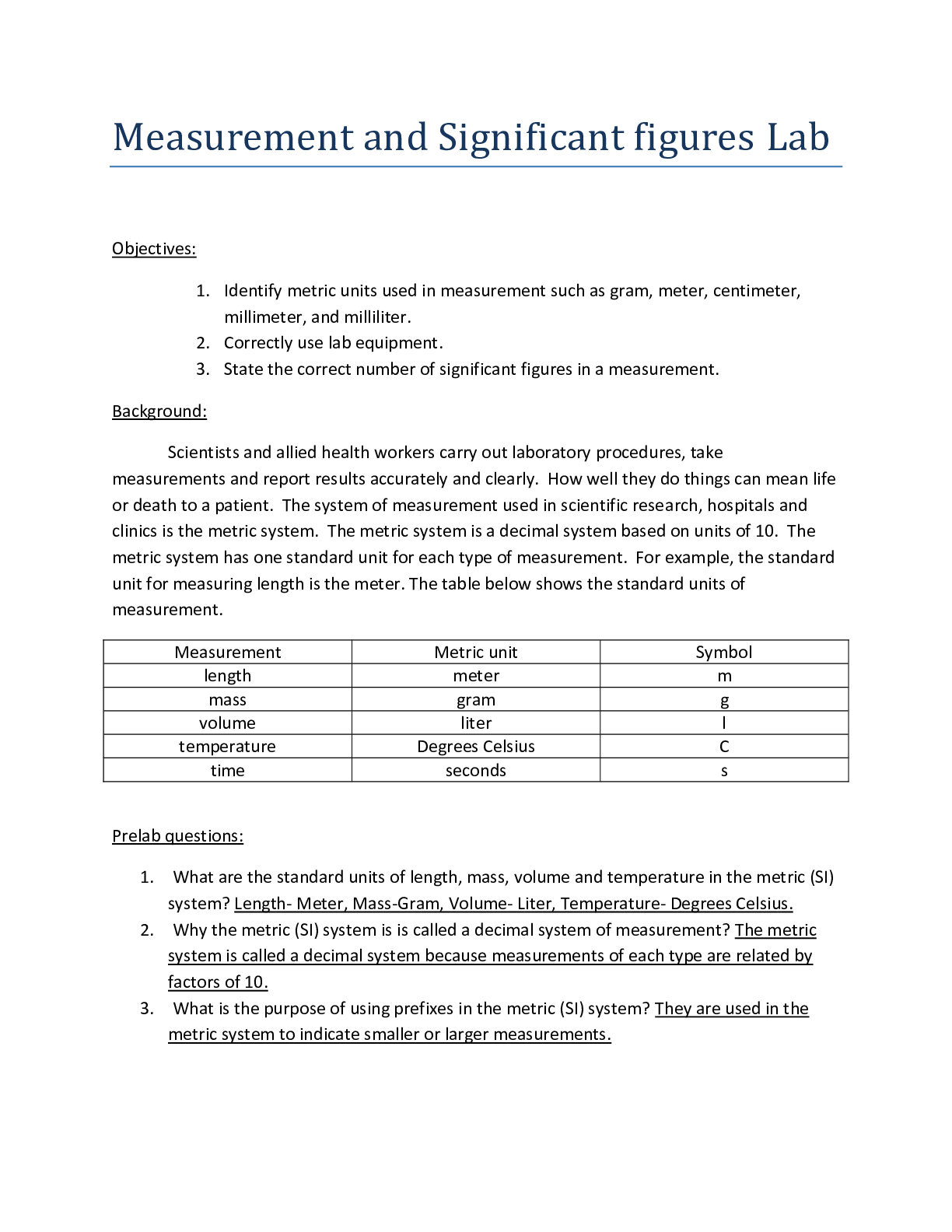

.png)
.png)
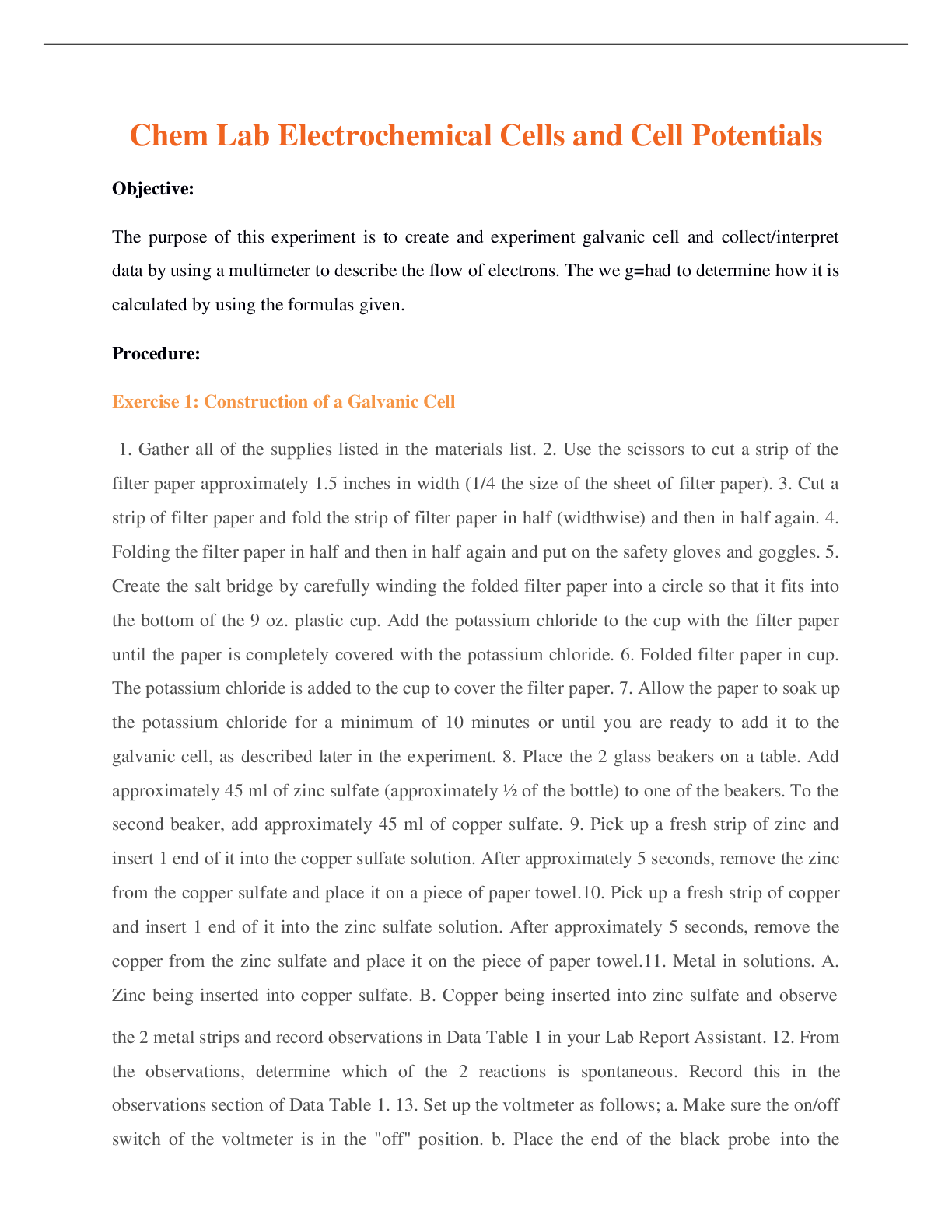
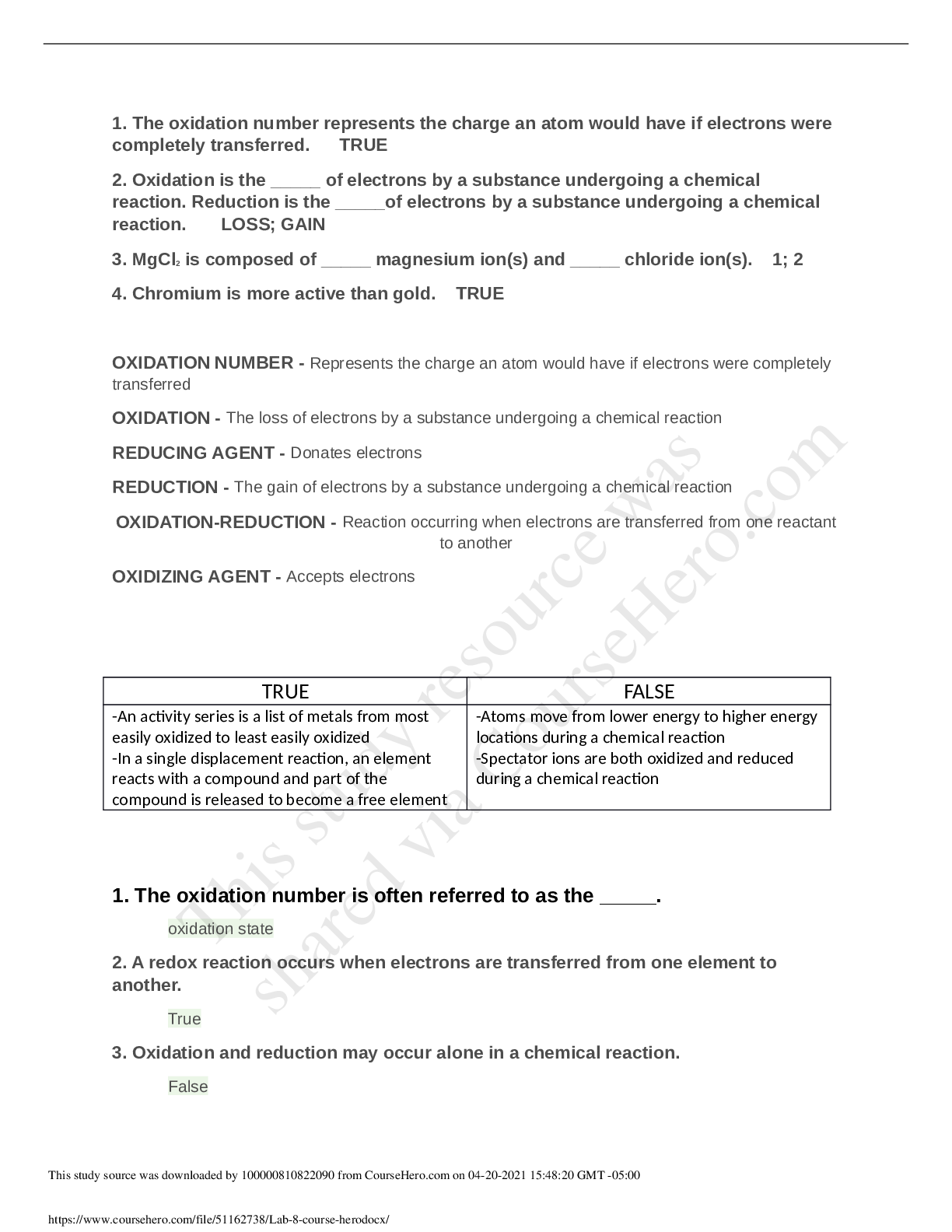


.png)



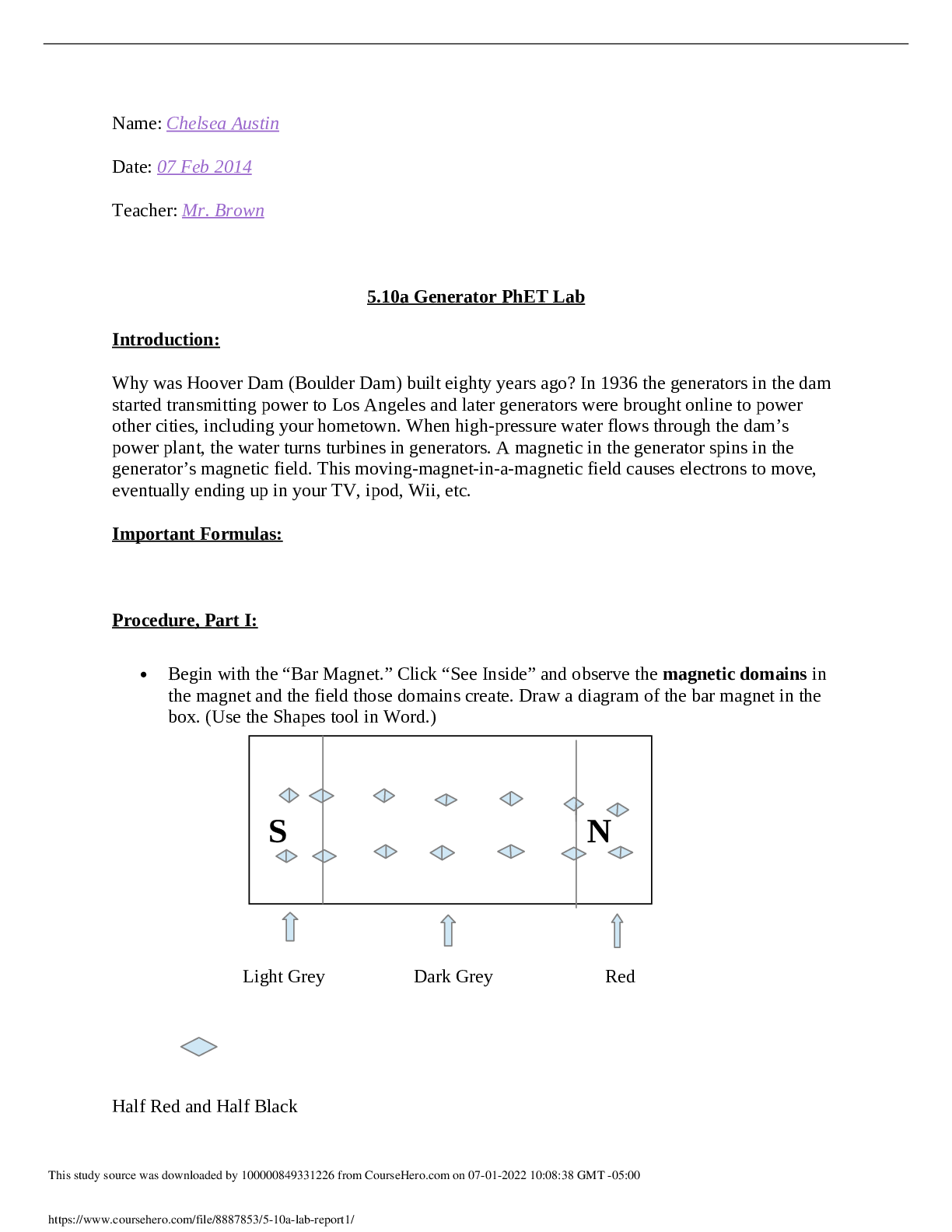
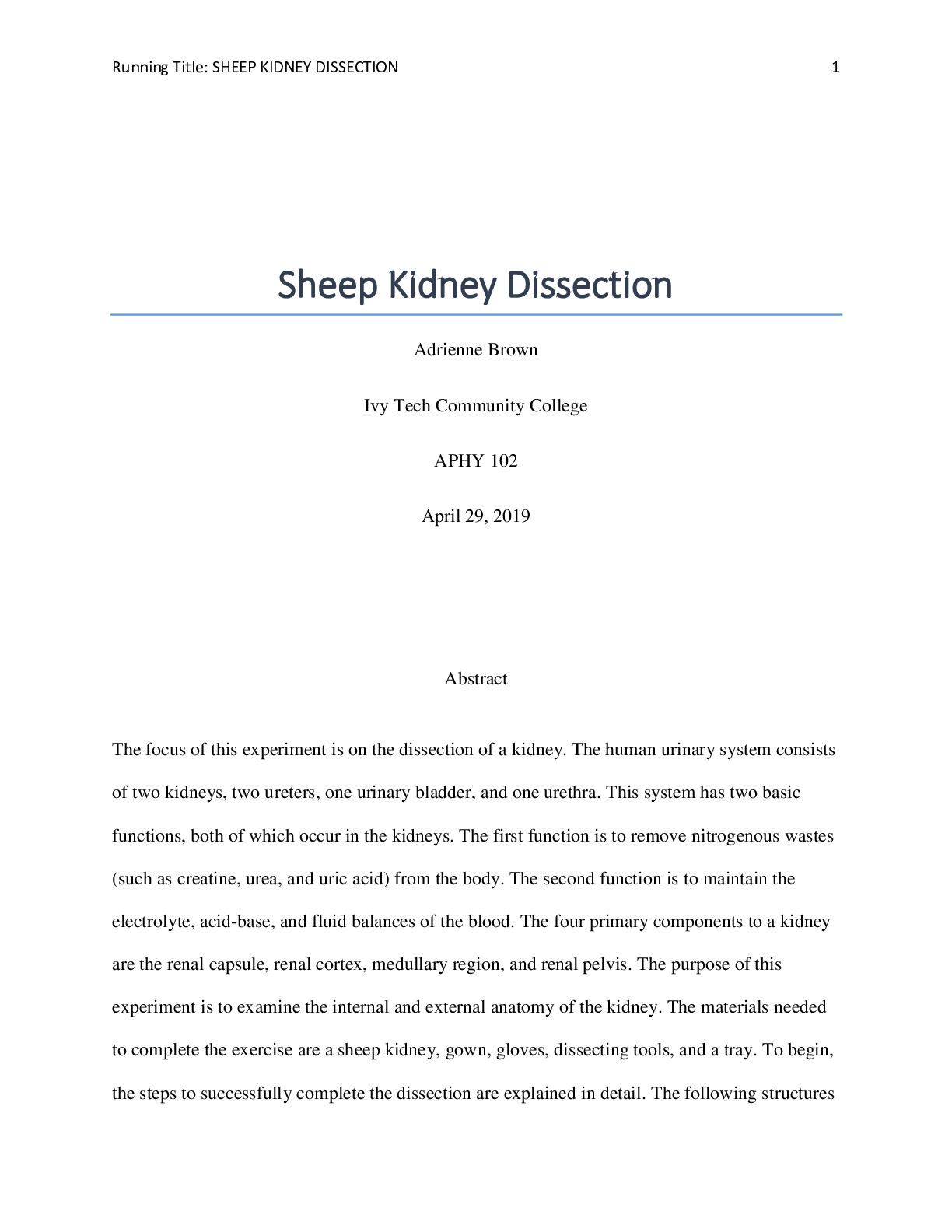

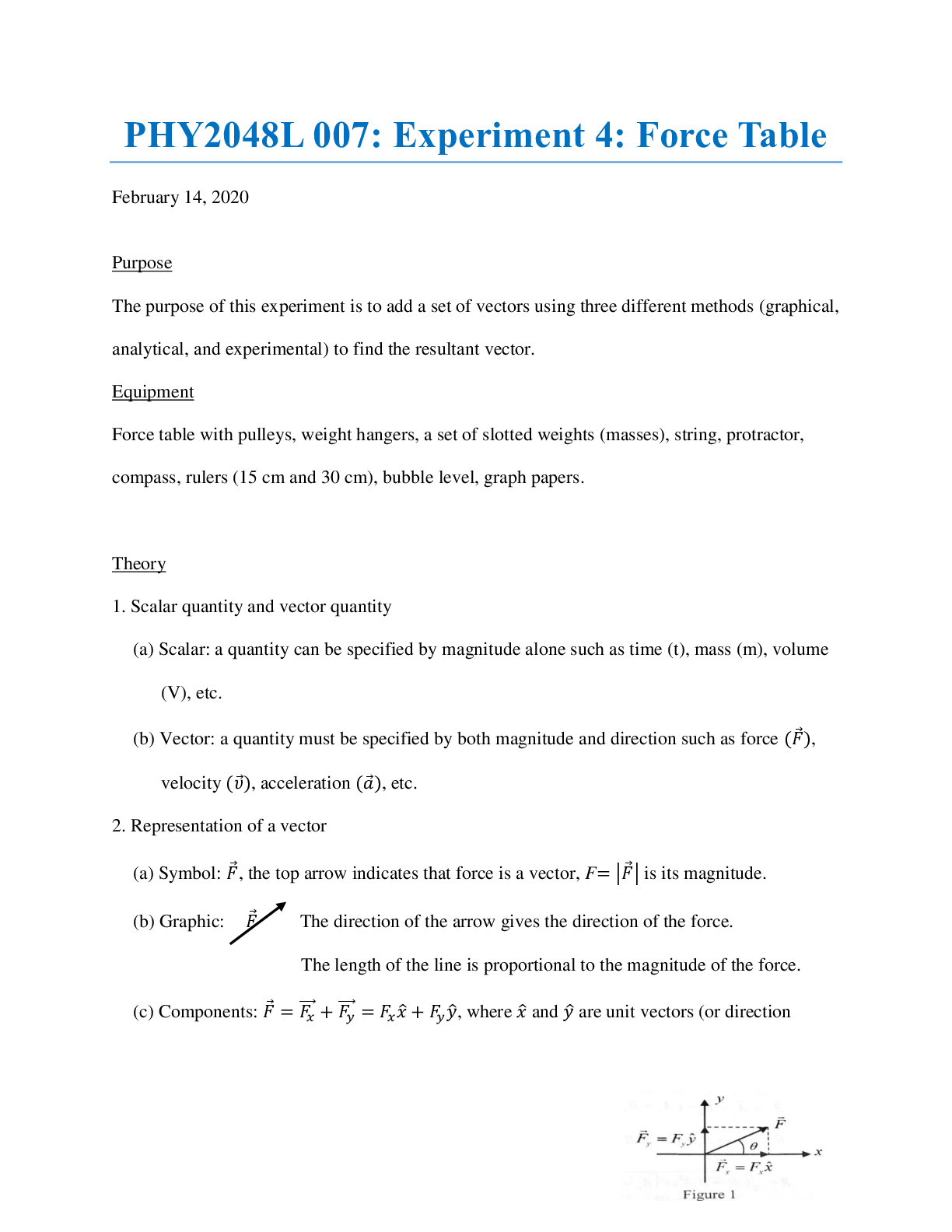
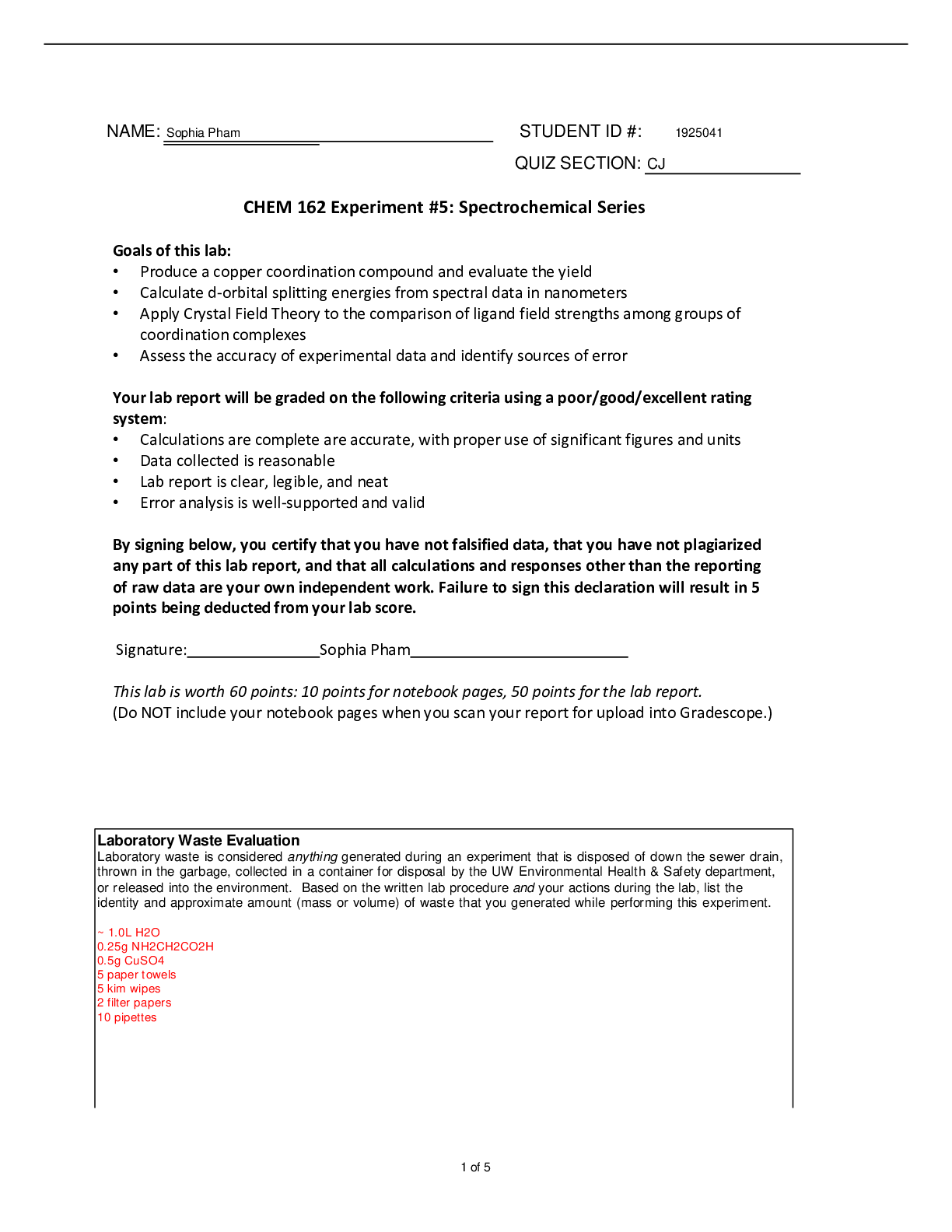
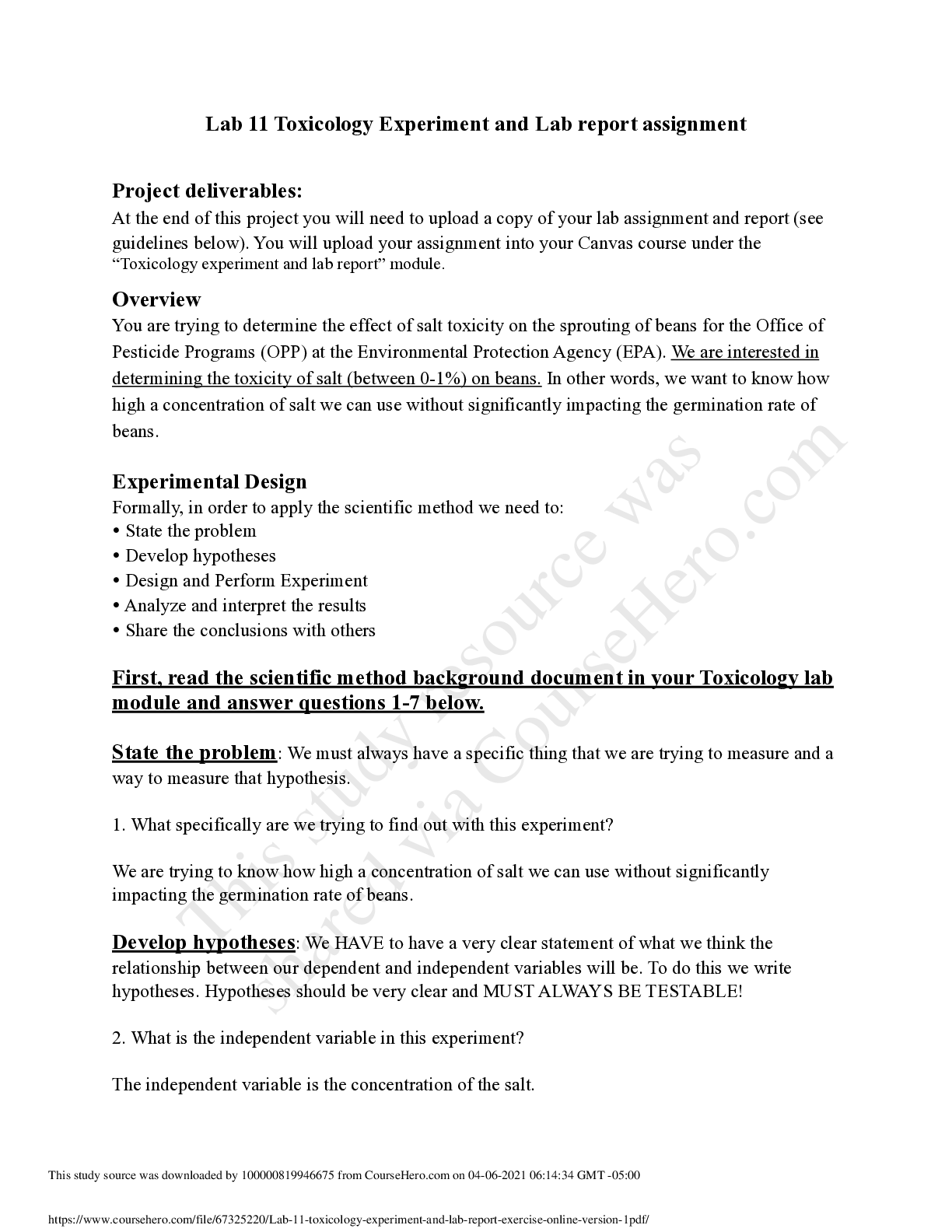
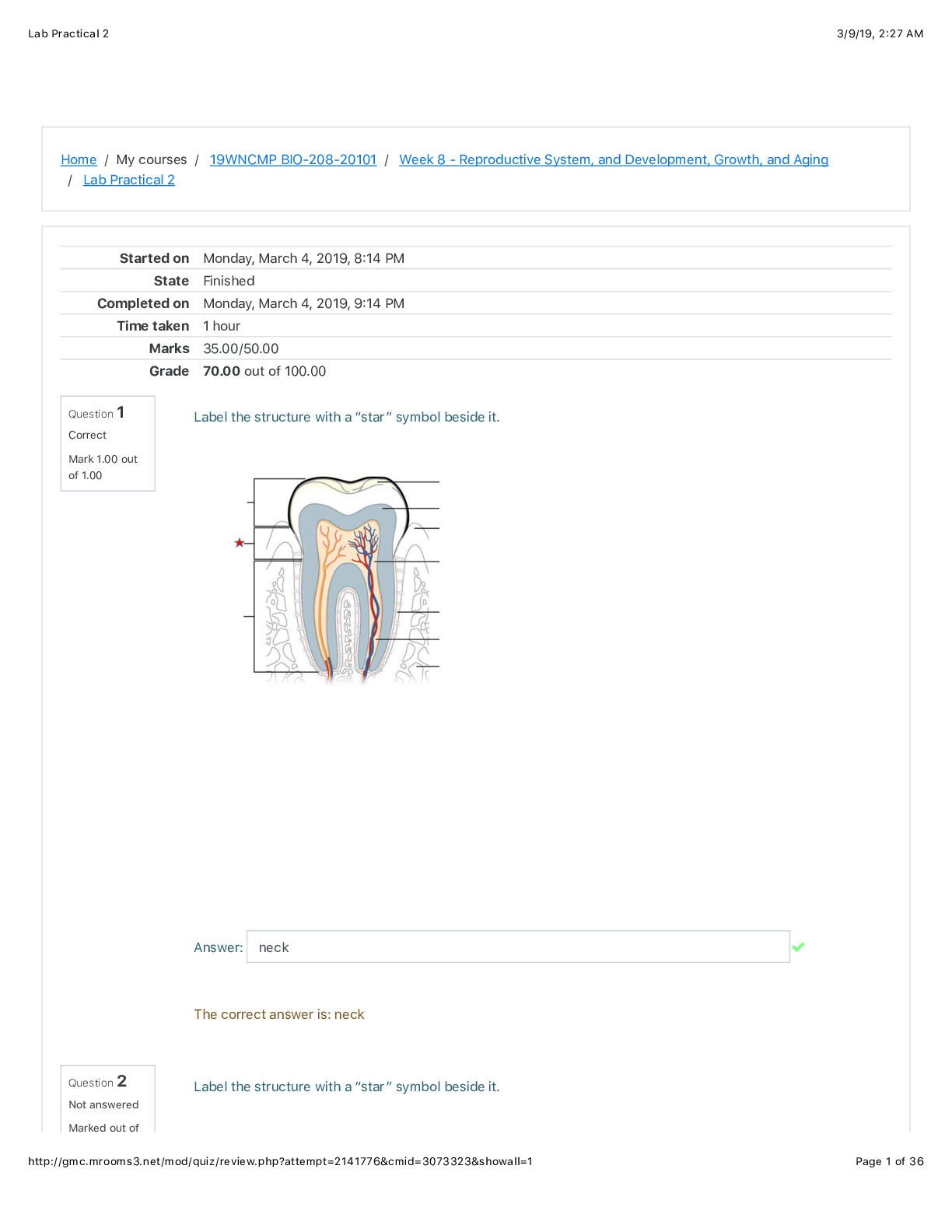

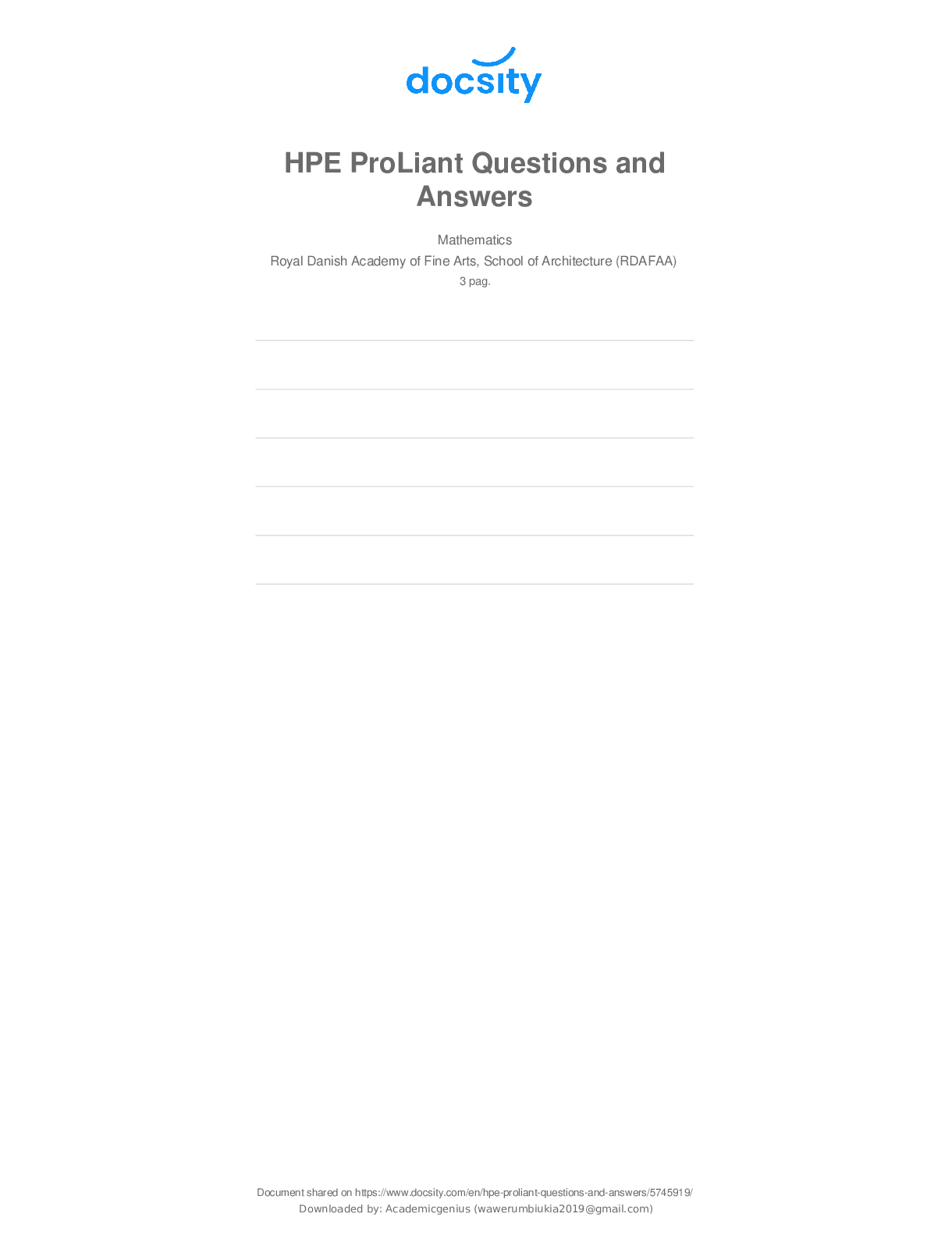
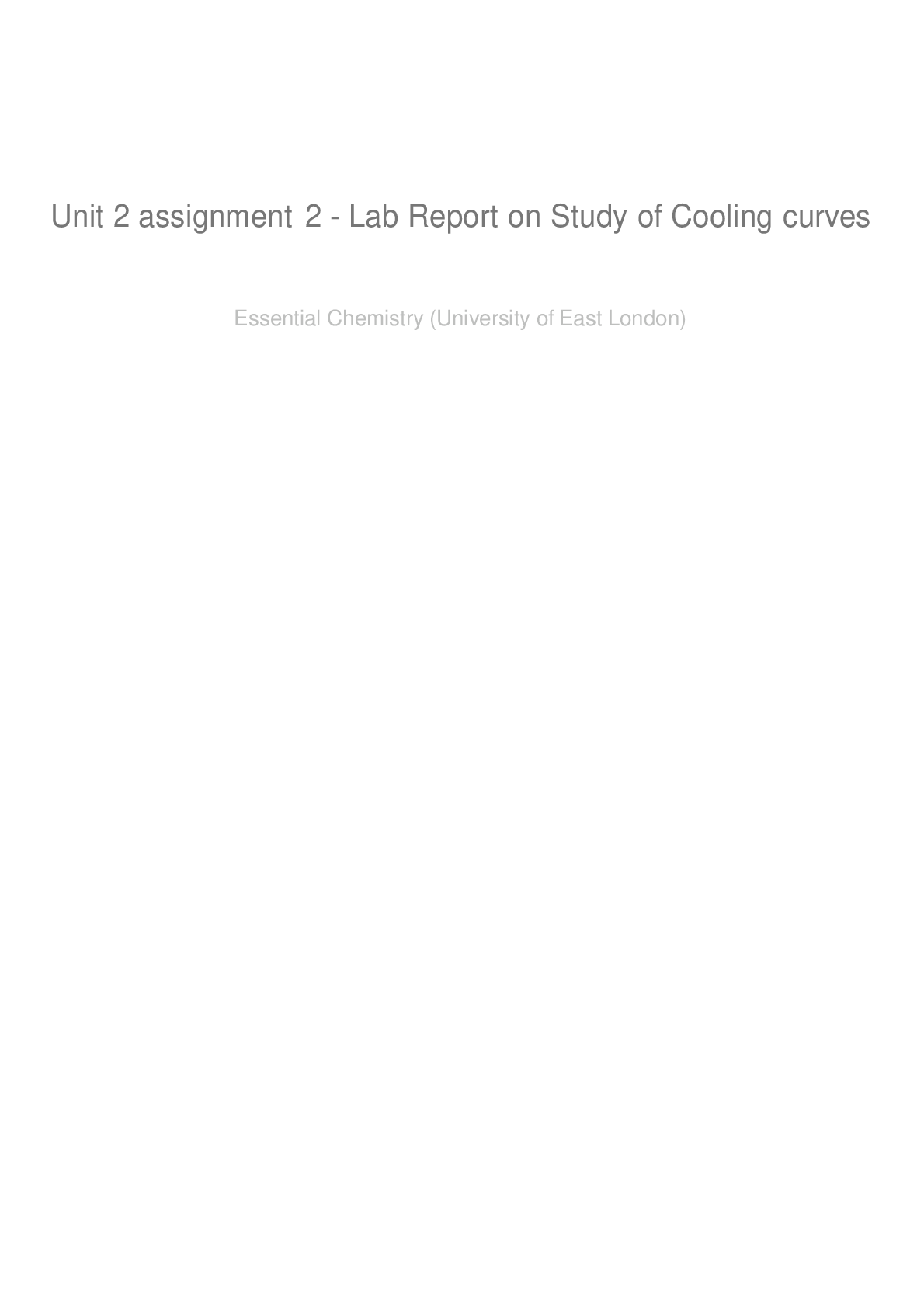
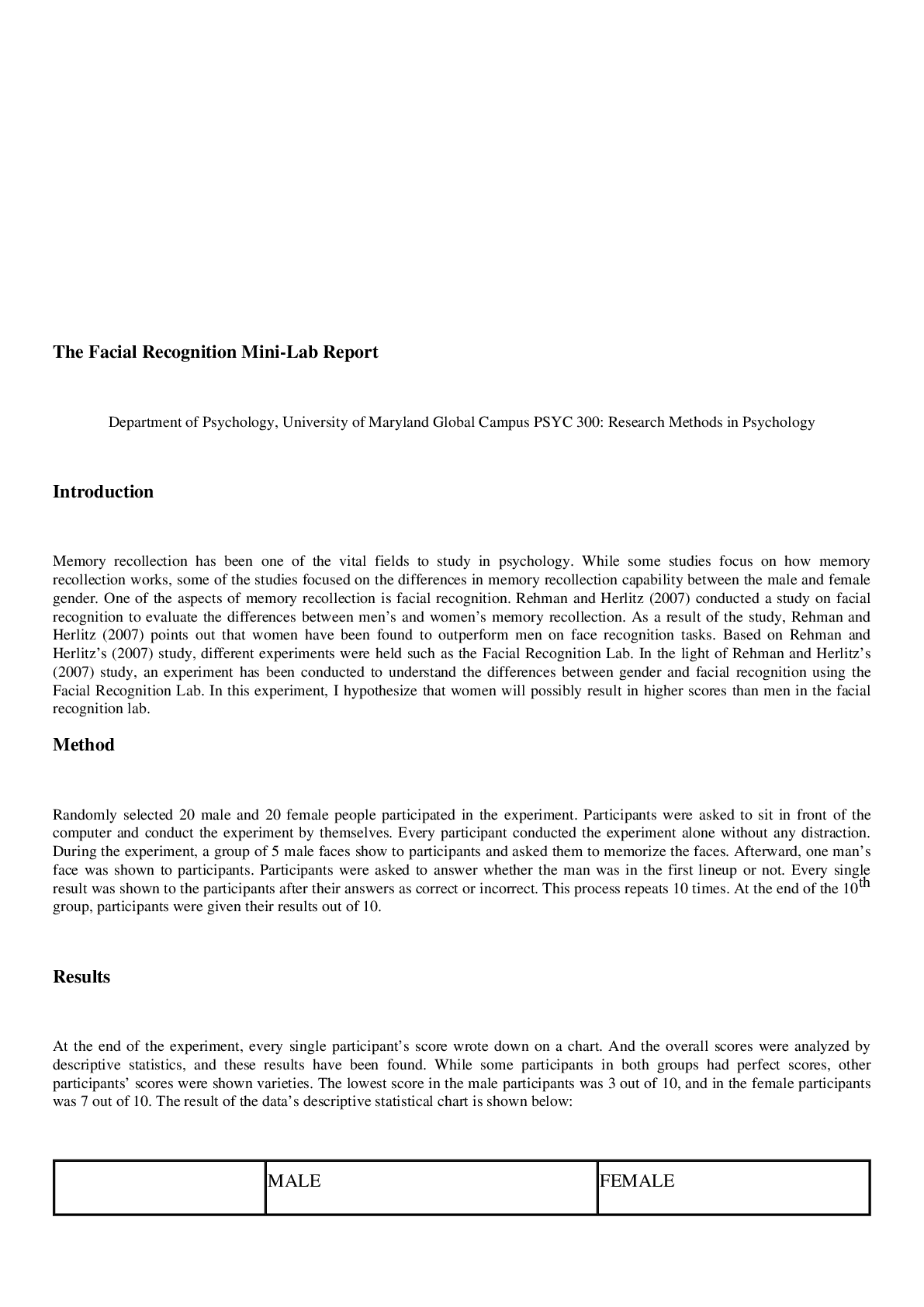
 (1).png)
